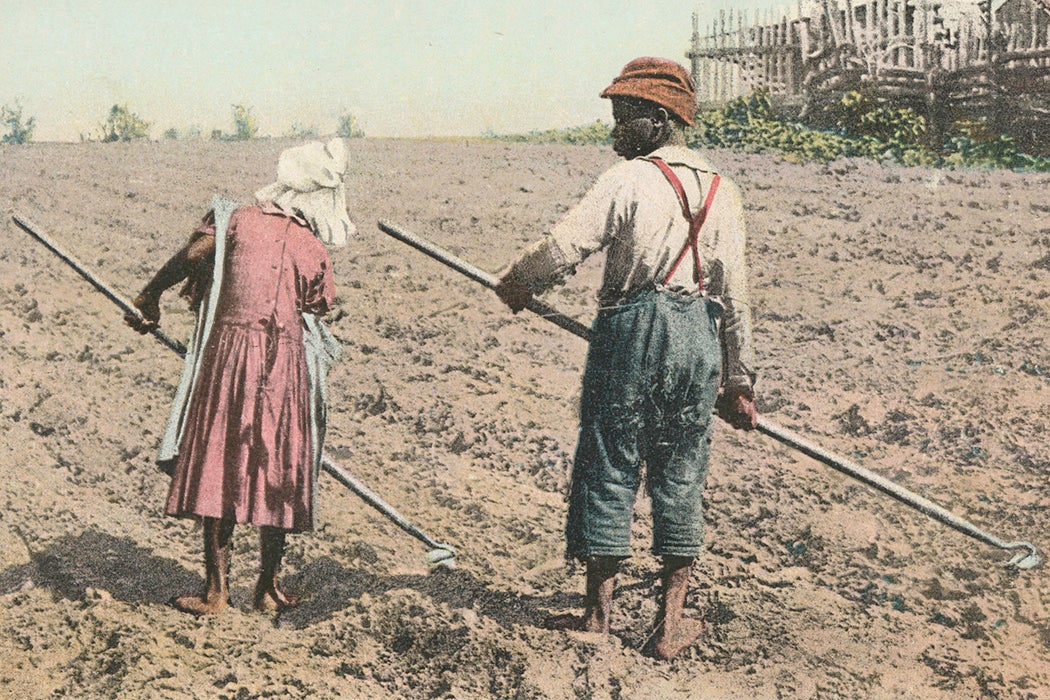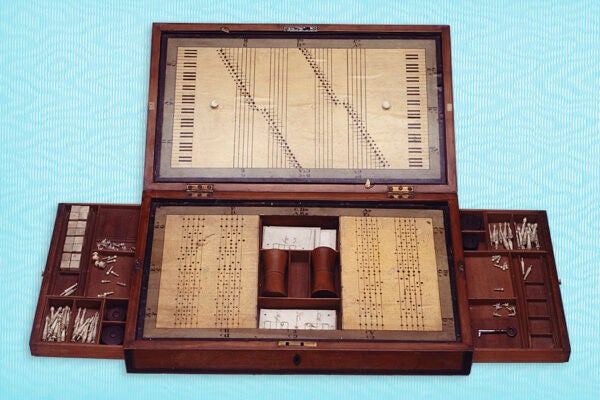The plantation hoe, the ubiquitous farming tool of the British Atlantic, has been ignored historically, especially when compared to the plow. Yet, as historian Chris Evans shows, there’s a “complex and knotted history” to these hoes. Over two centuries, hoes were the “outcome of a panhemispheric commodity chain that terminated in the plantation zones of the New World” for the cultivation of tobacco, rice, sugar, and cotton, Evans writes. Europeans, who themselves farmed with the plow, manufactured and exported the hoes that became the signature tool of enslaved Africans in the plantations.
“This disregarded field implement, apparently so removed from the consumer ebullience of the British Atlantic” was, argues Evans, very much part of the
new model of production and consumption in the eighteenth century—product innovation, elaboration, differentiation. […] Its manufacturers sought out and served niche markets with great success. They developed high-volume yet flexible production systems. They engaged in adaptive redesign by means of a dialogue with their customers. As a consequence, the plantain hoe was a dynamic good, evolving readily over time.
The explosion of slavery made for an “immense” market in hoes. There were, for example, some 3,000 enslaved people in Virginia in 1680; by 1750 there were 107,000. When South Carolina was founded as a colony in 1670, it had 200 enslaved people; by 1750, there were 39,000. By the middle of the eighteenth century, there were more than 250,000 humans enslaved in the Caribbean.
Intensively used hoes hardly lasted longer than a year, so demand kept increasing. One of the most prestigious British manufacturers was Crowley, which produced hoes in northwest England and shipped them via a warehouse in London. The firm produced 11,000 hoes per week from 54 small hoe-shops in the 1750s. “There was no lack of consumer choice,” Evans writes. Crowley hoes came in three styles: the Virginia, the Carolina, and the Barbados, adapted for the cultivation of, respectively, tobacco, rice, and sugar. But that was only the start of the specialization. Evans reproduces an illustration from an 1816 catalog of Sheffield iron products showing nine different hoes. In an 1878 Sheffield compendium, the Brazil hoe came with a total of 165 options for sizes and finishes.
“Makers also began to offer a more varied range of hoes so that planters could maximize the exploitation of their enslaved labor force. […] Hoes began to be adjusted to the exact physical abilities of each sex and every age group, allowing the last particle of available labor power to be extracted,” he writes.
But who was the consumer here? The enslaved child with a specially made diminutive hoe?
As in other areas of labor, “slave consumers remain inscrutable,” Evans explains, “rendered so by their servitude and kept so by the accumulated contempt that surrounds the implement with which they labored.”
Weekly Newsletter
“The plantation hoe showed astonishing vitality as a good, yet it was never an article that earned cultural esteem,” explains Evans. By the time of the American Revolution, the hoe attracted “outright hostility” by patriot elites as a mark of colonial subjugation to the British. In Virginia and the Caribbean, the plow became “identified as a vehicle of modernity; the hoe became correspondingly abject.” In the Carolinas, as rice cultivation expanded via tidal irrigation and expertise in hydrology, “the hoe was no longer emblematic of low-country rice.
“The slaves’ ordeal went on, but the instrument with which they toiled underwent ideological erasure.”
Cotton cultivation in the American South, advancing through the 1820s and 1830s, depended on the hoe. But here, too, there was a concerted effort to turn to the plow, especially during the 1840s, once the tree stumps in the fields were out of the way. Hoes were still used in great numbers across the plantation system through the nineteenth century, but they’d been degraded as tools, paralleling the degradation of those forced to wield them.







